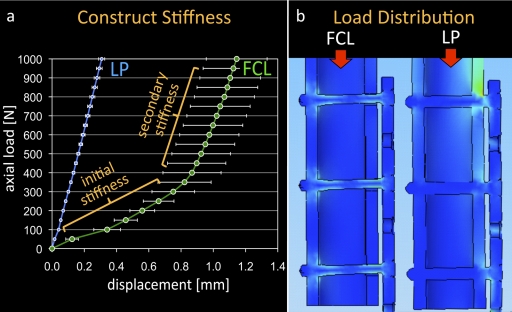Fig. 5.
a: Far-cortical-locking (FCL) constructs exhibit a biphasic stiffness profile, similar to that of Ilizarov external fixators. The primary stiffness was 88% lower than that of the standard locked-plate (LP) construct, enabling interfragmentary motion at reduced postoperative loading. At elevated loads, far-cortical-locking stiffness increases as a result of the additional support of screws at the near cortex. (Reprinted from: Bottlang M, Doornink J, Fitzpatrick DC, Madey SM. Far cortical locking can reduce stiffness of locked-plate constructs while retaining construct strength. J Bone Joint Surg Am. 2009;91:1988.) b: The elastic shaft of far-cortical-locking screws allows evenly distributed load sharing between screws and effectively prevents the stress risers seen at the end-screw of standard locked-plate constructs46.

